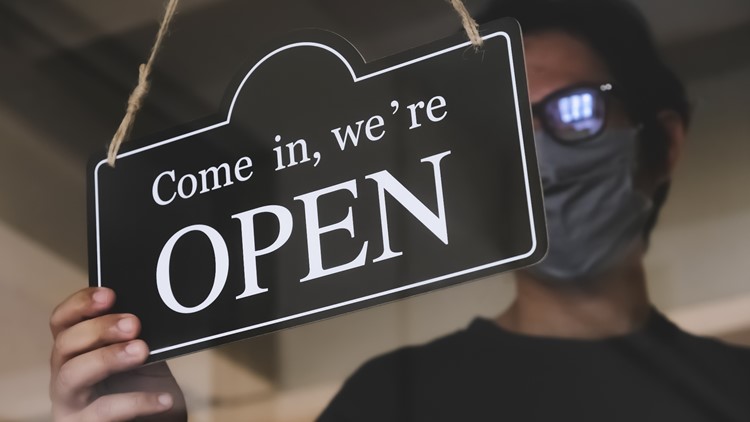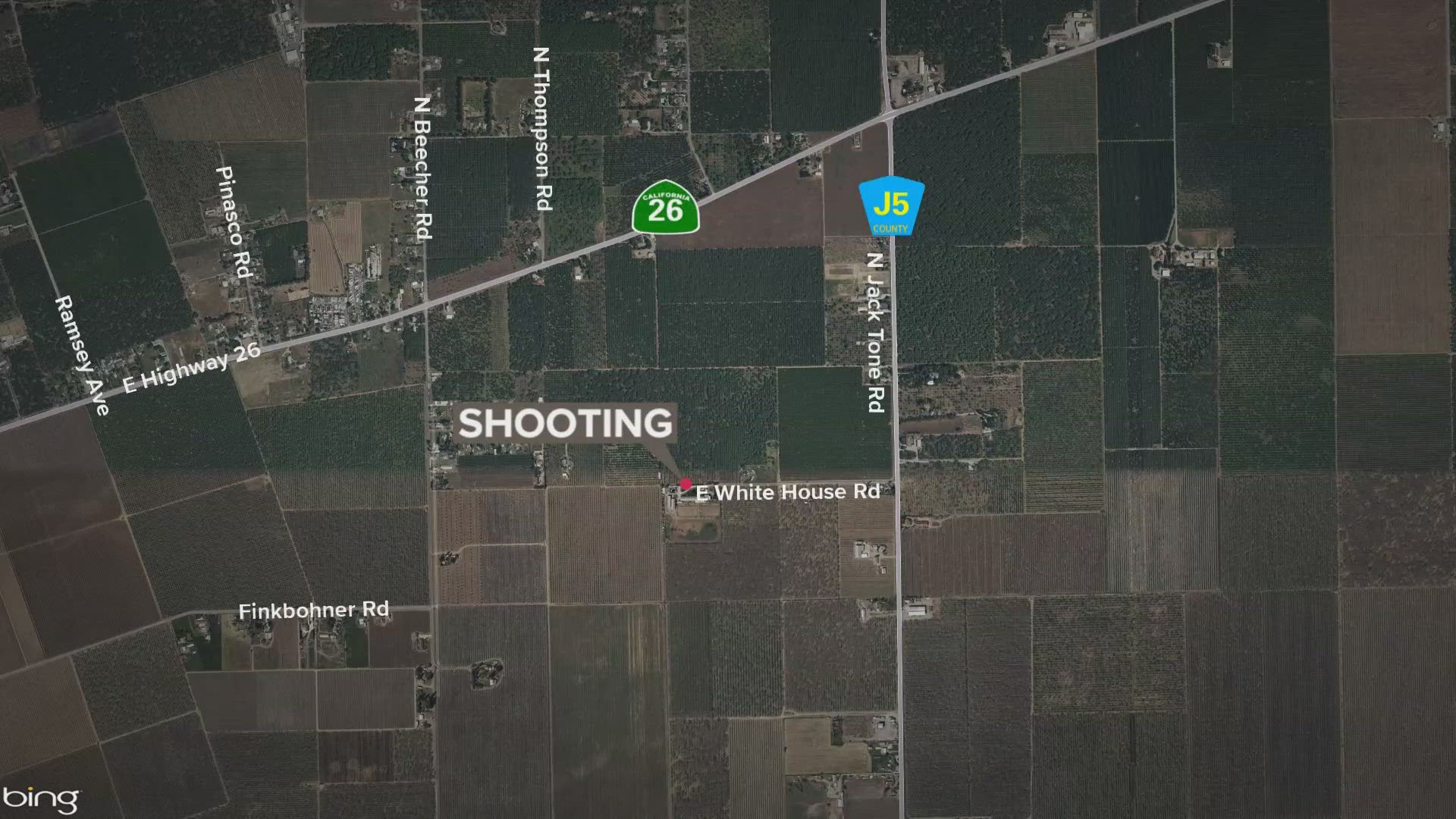SAN JOAQUIN COUNTY, Calif. — San Joaquin County is stuck once again in the red tier of California’s reopening plan. But unlike the stall they had in the purple tier, the state's reopening is in sight, regardless of their tier status.
In early April, Governor Gavin Newsom announced that the tier system, which has defined the way counties have reopened for months, could be going away on June 15. Should the state meet the criteria on June 15, everyday activities would be allowed, and businesses would be open with modifications.
As the end of April draws near, the best case scenario for San Joaquin County is four weeks in the orange tier and a week in the yellow tier before the whole system is gone. However, there’s not much clarity as to what exactly happens on and after June 15.
“The state hasn’t completely released all of their plans for what this means as far as reopening,” said Tiffany Heyer, spokesperson for the San Joaquin County Office of Emergency Services. “We know that this ‘Beyond the Blueprint’ - there are still some restrictions, that larger scale events or the masking will still be in effect, but we don’t know a lot of the other details.”
Those details are a sticking point for Doug Wilhoit, CEO of the Greater Stockton Chamber of Commerce. He said the tier movement, even just 5 weeks of it, still matters to the businesses on the ground.
“If there were the knowns and the knowns were absolute, it would make it a lot easier, but there are knowns and unknowns. And, the knowns could change, and the unknowns could come and bop you in the face,” Wilhoit said.
He added that some of those "unknowns" are overhead costs for businesses, supply chain lag, and being able to find employees. With little known about what exactly happens on or after June 15, the dilemma boils down to some businesses figuring out whether they’ll be moving tables back into the building and how long they’ll be able to have them there if things get walked back.
“More is better sometimes… but what are the costs?” Wilhoit asked. “Are the things around that business going to 50%, the supply chain, the cost of doing business, the overhead, the amount of employees they can bring back?”
A move to the orange tier would mean a move to 50% occupancy for indoor dining. Last March, before the lockdowns happened, the California Restaurant Association said there was a chance many restaurants would not be able to survive with that kind of restriction.
However, the situation is a bit different in 2021. Businesses have adapted since last March. They implemented outdoor dining strategies and closed roadways for “streateries.” Wes Rhea, CEO of Visit Stockton, said some restaurants have even produced outdoor capacity that rivals what they can do indoors.
“I think it is a different thing for restaurants now when it comes to their ability to operate and make revenue… 25% is not ideal; there’s no doubt about that. But outdoor is still pretty strong and I see people, restaurants definitely being successful in that,” Rhea said.
For Rhea, the tier movement still matters. Orange might mean 50% indoor occupancy for restaurants, but it also means an actual reopening for bars and places like bowling alleys. He said 50% occupancy could also translate to more viability for movie theaters as they continue to reopen.
“While for some businesses, restaurants, retail, the red’s been a little more forgiving - a little better for business - there are still plenty of businesses out there that aren’t doing anything or it just doesn’t pencil out,” Rhea said.
Even outside of the business world, some people are keeping an eye on the county’s movement through the tiers. School districts that have hopes for proms and graduation ceremonies would welcome a move to a less restrictive tier.
Victoria Brunn, spokesperson for Manteca Unified School District, said the red tier allows in-person commencement ceremonies outdoors with 20% occupancy, with other modifications. However, it wouldn’t allow for something like a traditional prom dance.
“MUSD administration is continuing to review and analyze our response to current local conditions,” she said in an email to ABC10. “As conditions continue to evolve we remain committed to making all decisions, including redirecting all resources available, based on student need.”
At Tracy Unified School District, a move to the orange tier could mean more attendees at a graduation ceremony.
“Our high schools are having multiple graduations, so a move to orange might reduce the number of graduations from 3 to 2,” Stephens said.
Even if the county, at best, has a chance at four weeks in the orange tier and one week in the yellow before the tier system goes away, many say there are still reasons to move through the tier system until it goes away.
“People to people is a thing we’ve missed for over a year, and that was nice to get back, even if it was at 25% of occupancy,” Wilhoit said.
Heyer said that the county’s tier metrics are heading in the right direction for a tier move, even if they didn’t get an orange tier credit for this week.
“Our numbers, for the most part, are trending downward which is what we need. Unfortunately, they’re just a little too far above to get any credit for that orange tier, so we have another week to see if we’ll get any credit,” she said.
Still, the looming June 15 date over any tier change presents unknowns, but Rhea believes that date conveys a bit of hope for businesses enduring the restrictions.
“I think some of these businesses have worked doubly hard to make half as much money,” he said. “We understand that, and I think we all just are hopeful and excited about June 15. I just think that we need to be ready, because I think everybody’s going to be really busy.”





















